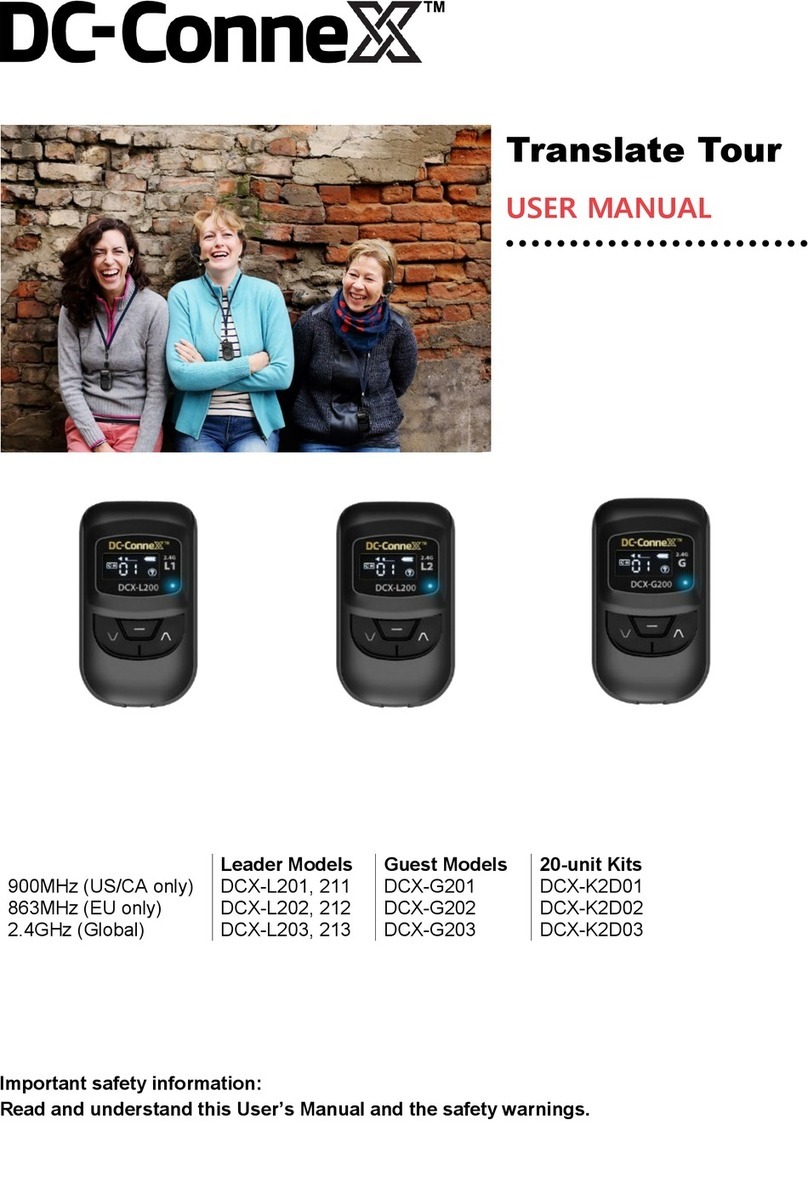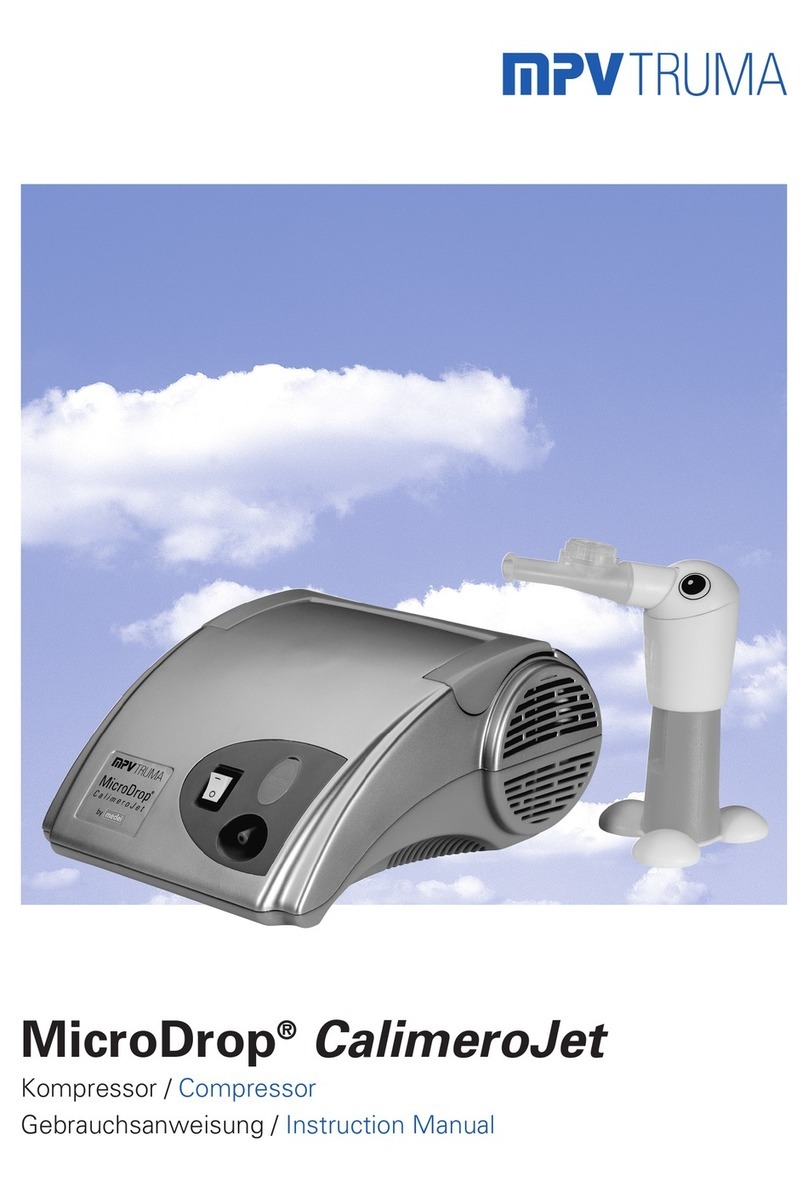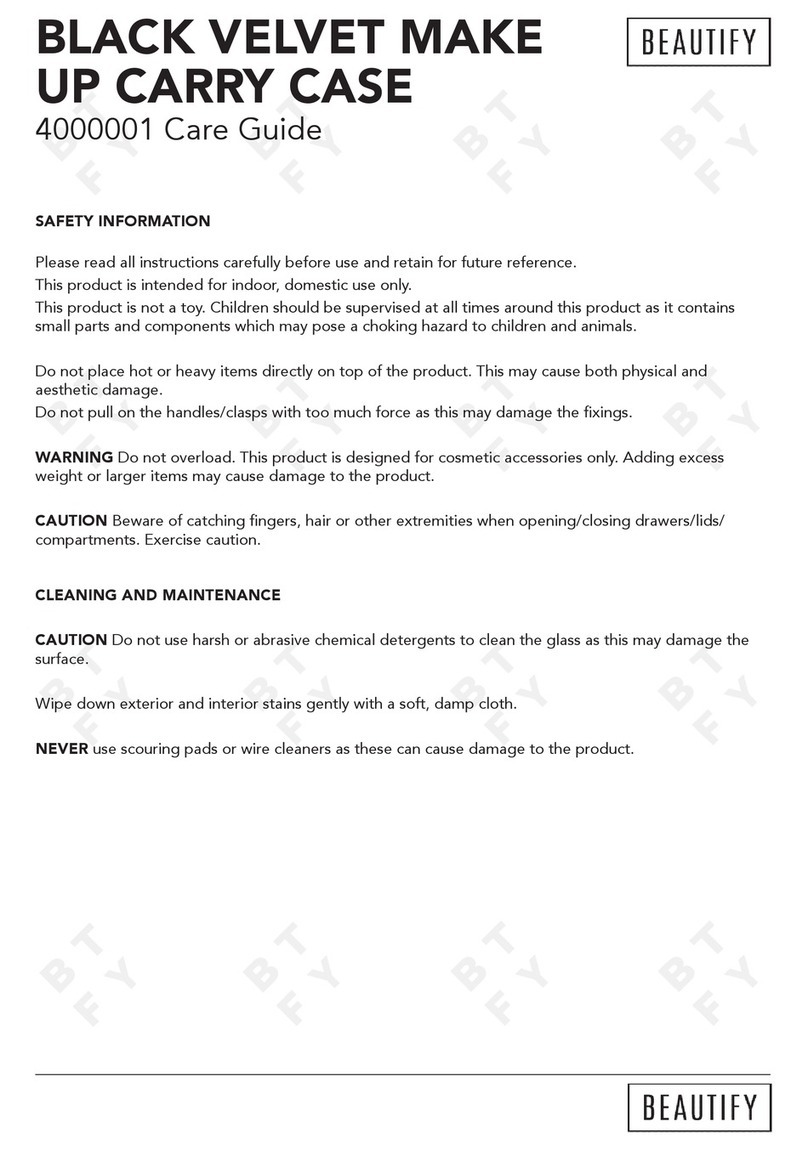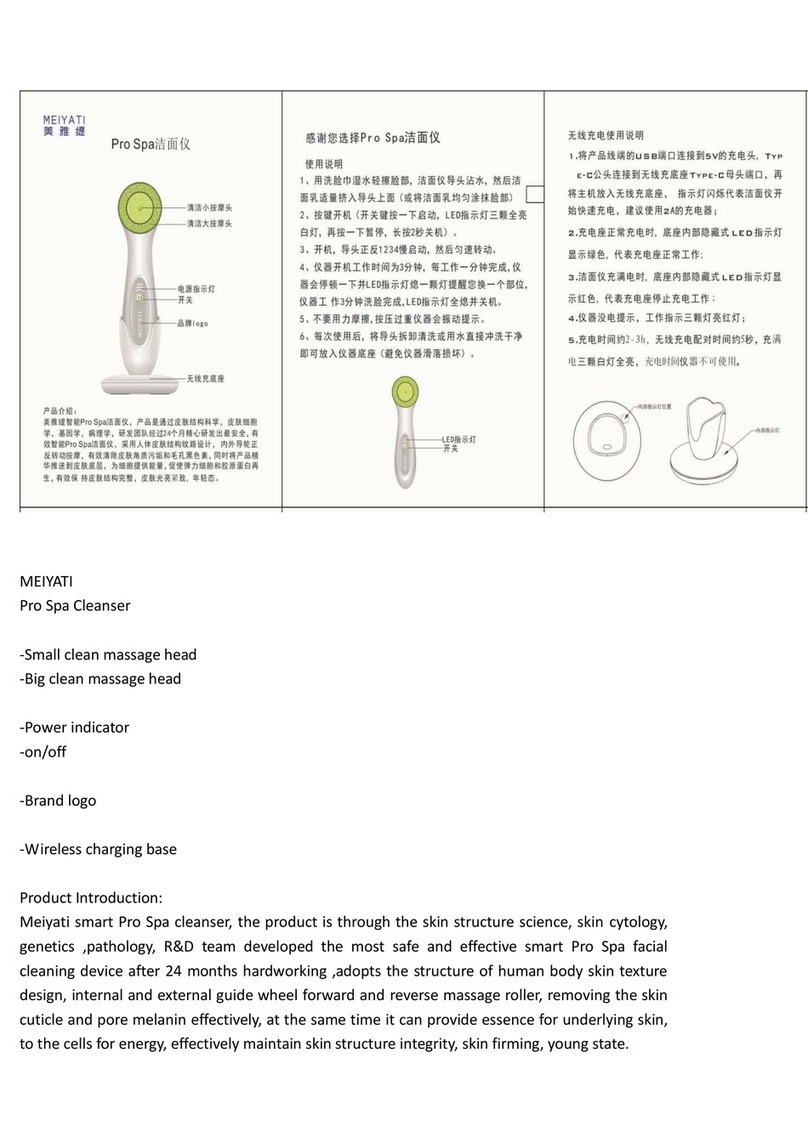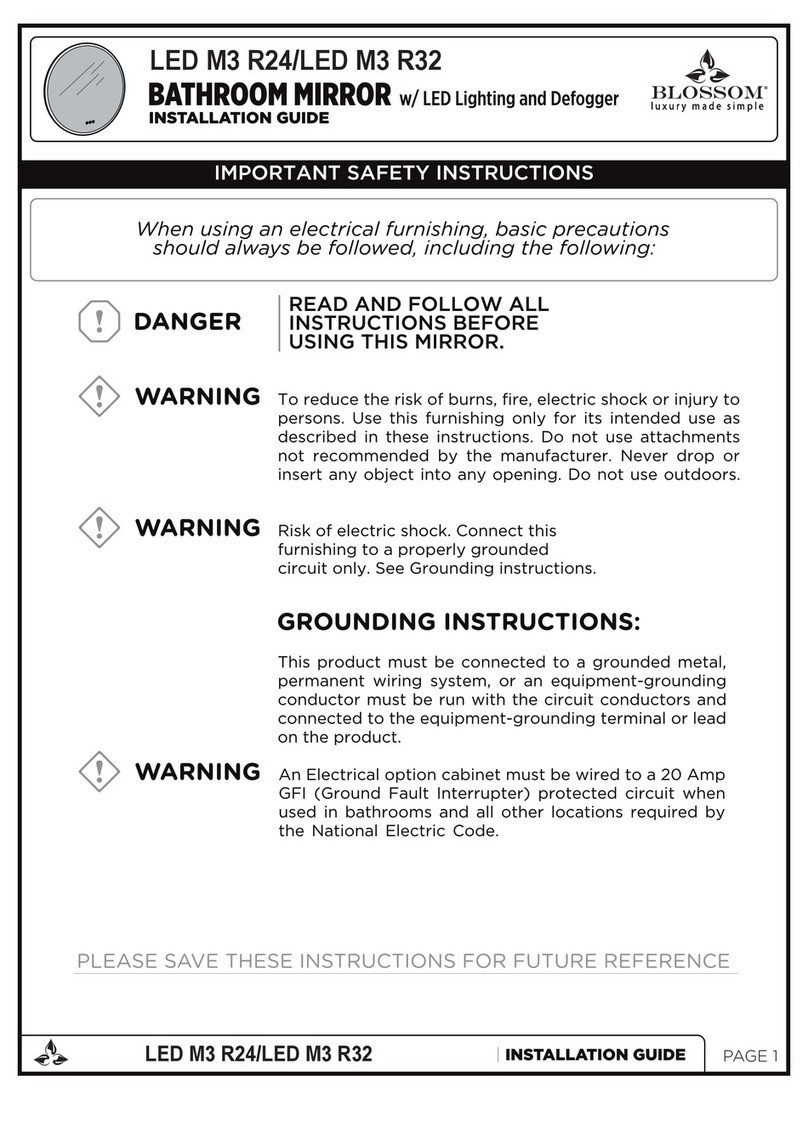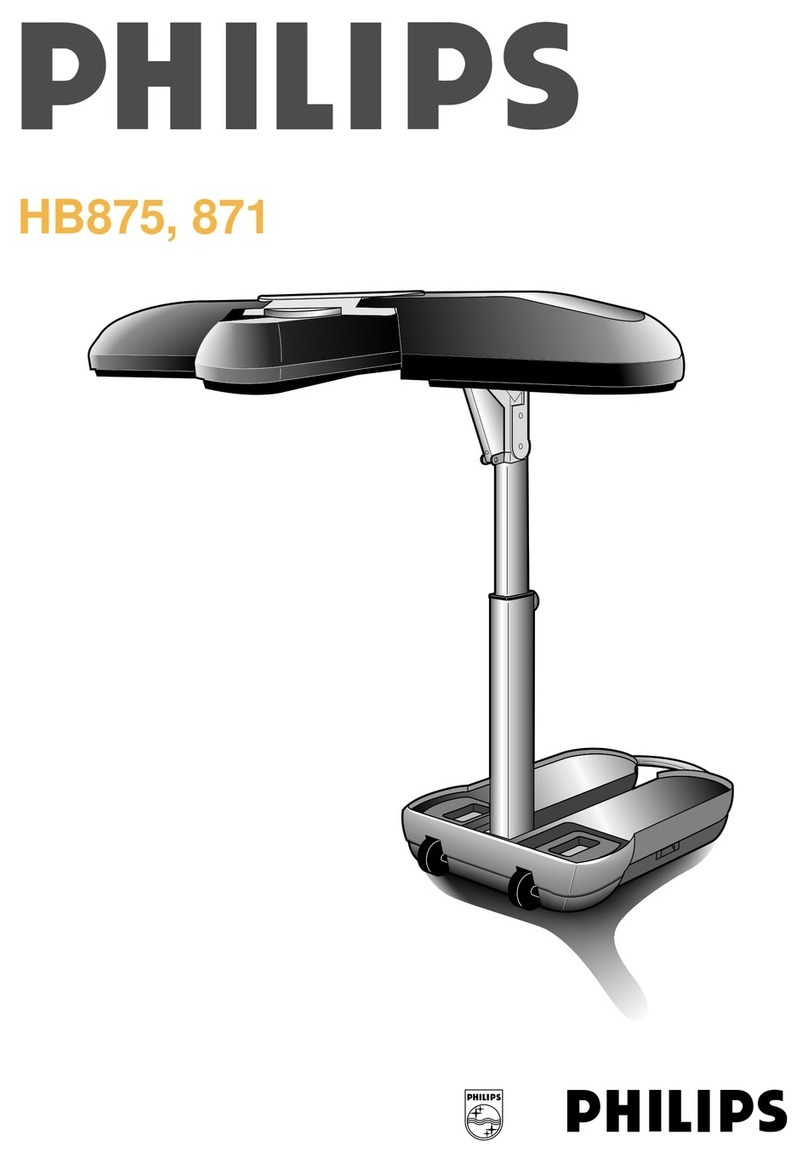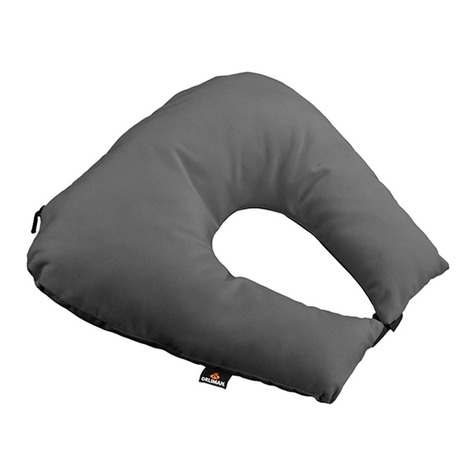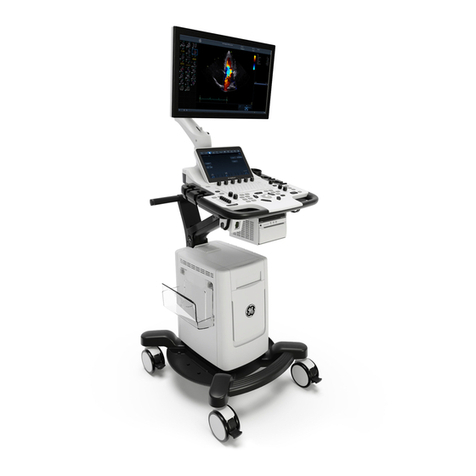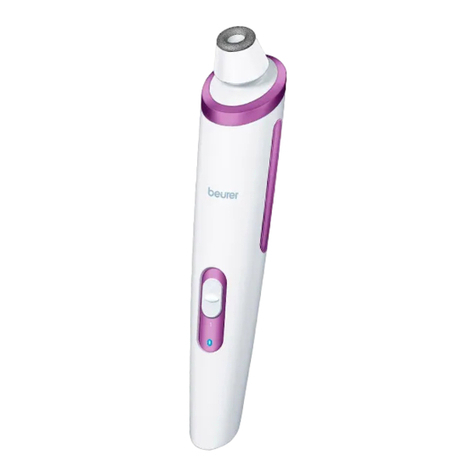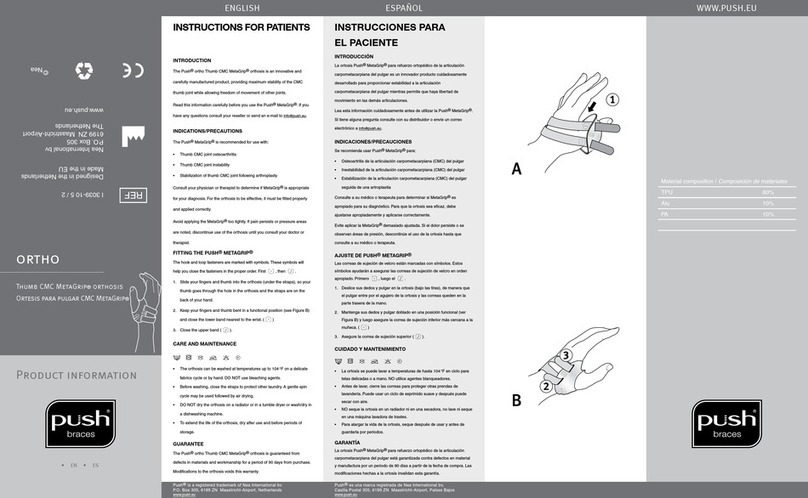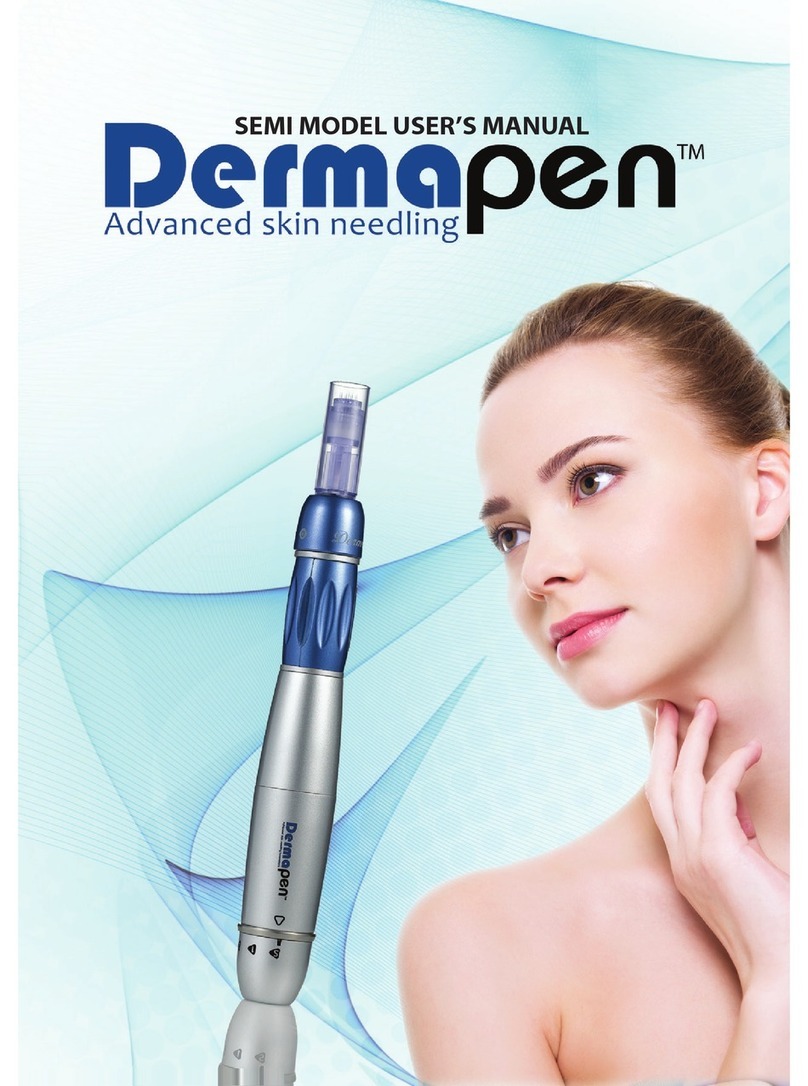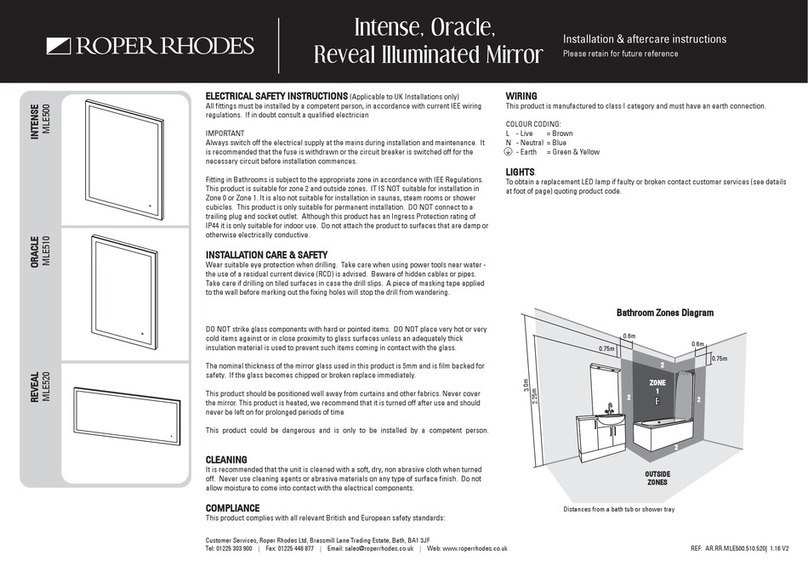Planmeca Proline CC User manual

Planmeca Proline CC
pan/ceph/Dimax3
TECHNICAL MANUAL
Publication part number 688402
Version 29
Published 2004-05
En


TABLE OF CONTENTS
Planmeca Proline CC Panoramic X-ray TOC-1
Technical Manual
Chapter A GENERAL & TECHNICAL DATA
1WARNINGS . . . . . . . . . . . . . . . . . . . . . . . . . . . . . . . . . . . . . . . . . . . . . A-1
2MANUAL VERSIONS . . . . . . . . . . . . . . . . . . . . . . . . . . . . . . . . . . . . . A-2
3TECHNICAL SPECIFICATIONS . . . . . . . . . . . . . . . . . . . . . . . . . . . . . A-3
4USER’S STATEMENT FOR PLANMECA PROLINE CC PANORAMIC
X-RAY . . . . . . . . . . . . . . . . . . . . . . . . . . . . . . . . . . . . . . . . . . . . . . . . . A-4
5GENERAL FEATURES . . . . . . . . . . . . . . . . . . . . . . . . . . . . . . . . . . . . A-6
5.1 Fault protection . . . . . . . . . . . . . . . . . . . . . . . . . . . . . . . . . . . . . . . . . . . . . . . . . . . . . A-6
5.2 Maximum exposure rate . . . . . . . . . . . . . . . . . . . . . . . . . . . . . . . . . . . . . . . . . . . . . . A-8
Chapter B KEYBOARD FUNCTIONS & MODES
1KEYBOARD OVERVIEW . . . . . . . . . . . . . . . . . . . . . . . . . . . . . . . . . . B-1
2NORMAL MODE KEYBOARD FUNCTIONS . . . . . . . . . . . . . . . . . . . B-2
2.1 Normal user functions . . . . . . . . . . . . . . . . . . . . . . . . . . . . . . . . . . . . . . . . . . . . . . . . B-2
2.2 Special user settings. . . . . . . . . . . . . . . . . . . . . . . . . . . . . . . . . . . . . . . . . . . . . . . . . B-2
2.3 Automatic return . . . . . . . . . . . . . . . . . . . . . . . . . . . . . . . . . . . . . . . . . . . . . . . . . . . . B-3
2.4 Temple rest motor inactivation . . . . . . . . . . . . . . . . . . . . . . . . . . . . . . . . . . . . . . . . . B-3
2.5 Automatic temple rest closing inactivation . . . . . . . . . . . . . . . . . . . . . . . . . . . . . . . . B-3
2.6 Test mode . . . . . . . . . . . . . . . . . . . . . . . . . . . . . . . . . . . . . . . . . . . . . . . . . . . . . . . . . B-4
2.7 Parameter history display . . . . . . . . . . . . . . . . . . . . . . . . . . . . . . . . . . . . . . . . . . . . . B-4
2.8 Autoprint settings . . . . . . . . . . . . . . . . . . . . . . . . . . . . . . . . . . . . . . . . . . . . . . . . . . . B-5
3SERVICE MODE KEYBOARD FUNCTIONS . . . . . . . . . . . . . . . . . . . B-6
3.1 How to enter/exit the service mode. . . . . . . . . . . . . . . . . . . . . . . . . . . . . . . . . . . . . . B-6
3.2 Service mode keys, displays & indicator lights . . . . . . . . . . . . . . . . . . . . . . . . . . . . . B-6
3.3 Service mode settings. . . . . . . . . . . . . . . . . . . . . . . . . . . . . . . . . . . . . . . . . . . . . . . B-11
3.4 Exposure counter display . . . . . . . . . . . . . . . . . . . . . . . . . . . . . . . . . . . . . . . . . . . . B-13
3.5 Error history display . . . . . . . . . . . . . . . . . . . . . . . . . . . . . . . . . . . . . . . . . . . . . . . . B-13
3.6 Up/down motor slow speed adjustment . . . . . . . . . . . . . . . . . . . . . . . . . . . . . . . . . B-14
3.7 Exposure switch selection. . . . . . . . . . . . . . . . . . . . . . . . . . . . . . . . . . . . . . . . . . . . B-14
3.8 Panoramic/cephalostatic setup . . . . . . . . . . . . . . . . . . . . . . . . . . . . . . . . . . . . . . . . B-15
3.9 Tube type programming . . . . . . . . . . . . . . . . . . . . . . . . . . . . . . . . . . . . . . . . . . . . . B-15
3.10 Model selection. . . . . . . . . . . . . . . . . . . . . . . . . . . . . . . . . . . . . . . . . . . . . . . . . . . B-16
3.11 Factory preset (recalling factory default quick exposure settings) . . . . . . . . . . . . B-16
Chapter C HELP & ERROR MESSAGES
1HELP MESSAGES . . . . . . . . . . . . . . . . . . . . . . . . . . . . . . . . . . . . . . . C-1
2ERROR MESSAGES . . . . . . . . . . . . . . . . . . . . . . . . . . . . . . . . . . . . . C-2
3ERROR MESSAGE EXPLANATIONS . . . . . . . . . . . . . . . . . . . . . . . . C-4
3.1 Errors 00-07 (User related errors). . . . . . . . . . . . . . . . . . . . . . . . . . . . . . . . . . . . . . . C-4
3.2 Errors 10-12 (recoverable errors) . . . . . . . . . . . . . . . . . . . . . . . . . . . . . . . . . . . . . . . C-4
3.3 Error 15 (Transversal slicing system error). . . . . . . . . . . . . . . . . . . . . . . . . . . . . . . . C-5
3.4 Errors 20-28 (time out errors) . . . . . . . . . . . . . . . . . . . . . . . . . . . . . . . . . . . . . . . . . . C-5
3.5 Errors 30-33 (generator errors). . . . . . . . . . . . . . . . . . . . . . . . . . . . . . . . . . . . . . . . . C-7
3.6 Errors 40-43 (mechanical errors) . . . . . . . . . . . . . . . . . . . . . . . . . . . . . . . . . . . . . . . C-7
3.7 Errors 50-57 (connector or cable errors). . . . . . . . . . . . . . . . . . . . . . . . . . . . . . . . . . C-8
3.8 Errors 60-61 (generator processor and AEC related errors). . . . . . . . . . . . . . . . . . . C-9
3.9 Errors 70-75 (software errors). . . . . . . . . . . . . . . . . . . . . . . . . . . . . . . . . . . . . . . . . C-10
3.10 Errors 80-83 (microprocessor chip errors) . . . . . . . . . . . . . . . . . . . . . . . . . . . . . . C-10
3.11 Errors 90-99 (other errors) . . . . . . . . . . . . . . . . . . . . . . . . . . . . . . . . . . . . . . . . . . C-11

TOC-2 Planmeca Proline CC Panoramic X-ray
TABLE OF CONTENTS
Technical manual
Chapter D ADJUSTMENT & CALIBRATION
1REQUIRED TOOLS . . . . . . . . . . . . . . . . . . . . . . . . . . . . . . . . . . . . . . D-2
2PANORAMIC X-RAY BEAM ADJUSTMENT . . . . . . . . . . . . . . . . . . . D-4
2.1 Checking the panoramic beam position . . . . . . . . . . . . . . . . . . . . . . . . . . . . . . . . . . D-4
2.2 Primary slot calibration . . . . . . . . . . . . . . . . . . . . . . . . . . . . . . . . . . . . . . . . . . . . . . . D-7
3PATIENT POSITIONING MECHANISM . . . . . . . . . . . . . . . . . . . . . . D-10
3.1 Checking the mechanism . . . . . . . . . . . . . . . . . . . . . . . . . . . . . . . . . . . . . . . . . . . . D-10
3.2 Patient positioning mechanism adjustment. . . . . . . . . . . . . . . . . . . . . . . . . . . . . . . D-14
4PATIENT POSITIONING LIGHTS . . . . . . . . . . . . . . . . . . . . . . . . . . D-19
4.1 Checking the lights . . . . . . . . . . . . . . . . . . . . . . . . . . . . . . . . . . . . . . . . . . . . . . . . . D-19
4.2 Positioning light adjustment . . . . . . . . . . . . . . . . . . . . . . . . . . . . . . . . . . . . . . . . . . D-20
5MECHANICAL ADJUSTMENT OF THE ROTATIONAL PART . . . . . D-21
5.1 Guiding profile and counterprofile . . . . . . . . . . . . . . . . . . . . . . . . . . . . . . . . . . . . . . D-21
5.2 Adjustment of the guidance wheel . . . . . . . . . . . . . . . . . . . . . . . . . . . . . . . . . . . . . D-22
5.3 Rotation limits . . . . . . . . . . . . . . . . . . . . . . . . . . . . . . . . . . . . . . . . . . . . . . . . . . . . . D-23
6SETTING THE CLOCK . . . . . . . . . . . . . . . . . . . . . . . . . . . . . . . . . . . D-24
7EXPOSURE WARNING SIGNAL ADJUSTMENT . . . . . . . . . . . . . . D-25
8AUTOMATIC EXPOSURE CONTROL (AEC) CALIBRATION . . . . . D-26
8.1 Checking/adjusting the primary slot position. . . . . . . . . . . . . . . . . . . . . . . . . . . . . . D-26
8.2 Base value adjustment . . . . . . . . . . . . . . . . . . . . . . . . . . . . . . . . . . . . . . . . . . . . . . D-28
8.3 Adjusting the AEC-signals . . . . . . . . . . . . . . . . . . . . . . . . . . . . . . . . . . . . . . . . . . . D-30
9CEPHALOSTAT ADJUSTMENT . . . . . . . . . . . . . . . . . . . . . . . . . . . . D-33
9.1 Removing the cassette holder cover. . . . . . . . . . . . . . . . . . . . . . . . . . . . . . . . . . . . D-33
9.2 Checking the head support position . . . . . . . . . . . . . . . . . . . . . . . . . . . . . . . . . . . . D-34
9.3 Head support adjustment . . . . . . . . . . . . . . . . . . . . . . . . . . . . . . . . . . . . . . . . . . . . D-35
9.4 Checking the soft tissue filter and the filter positioning light position . . . . . . . . . . . D-37
9.5 Soft tissue filter positioning light calibration and adjustment. . . . . . . . . . . . . . . . . . D-40
9.6 Soft tissue filter adjustment. . . . . . . . . . . . . . . . . . . . . . . . . . . . . . . . . . . . . . . . . . . D-43
9.7 Checking the cephalometric beam alignment . . . . . . . . . . . . . . . . . . . . . . . . . . . . . D-44
Chapter E DIMAX3 DIGITAL SYSTEM ADJUSTMENT
1REQUIRED TOOLS . . . . . . . . . . . . . . . . . . . . . . . . . . . . . . . . . . . . . . . E-2
2PANORAMIC X-RAY BEAM ADJUSTMENT . . . . . . . . . . . . . . . . . . . . E-4
2.1 Removing and attaching the fixed sensor head . . . . . . . . . . . . . . . . . . . . . . . . . . . . E-4
2.2 Sensor head with quick connector mechanism - removing the covers . . . . . . . . . . . E-9
2.3 Checking the panoramic beam position . . . . . . . . . . . . . . . . . . . . . . . . . . . . . . . . . E-10
2.4 Radiation beam adjustment . . . . . . . . . . . . . . . . . . . . . . . . . . . . . . . . . . . . . . . . . . E-14
3CALIBRATING PANORAMIC SENSOR HEAD . . . . . . . . . . . . . . . . . E-19
4PATIENT POSITIONING MECHANISM . . . . . . . . . . . . . . . . . . . . . . . E-27
4.1 Checking the mechanism . . . . . . . . . . . . . . . . . . . . . . . . . . . . . . . . . . . . . . . . . . . . E-27
4.2 Patient positioning mechanism adjustment. . . . . . . . . . . . . . . . . . . . . . . . . . . . . . . E-31
4.3 Adjusting the position of the sensor head . . . . . . . . . . . . . . . . . . . . . . . . . . . . . . . . E-36
4.4 Adjusting the position of the optical sensor of the sensor head . . . . . . . . . . . . . . . E-37
5OTHER PANORAMIC MODE ADJUSTMENTS . . . . . . . . . . . . . . . . . E-38
6CEPHALOSTAT ADJUSTMENT . . . . . . . . . . . . . . . . . . . . . . . . . . . . . E-39
6.1 Preparations before adjustments . . . . . . . . . . . . . . . . . . . . . . . . . . . . . . . . . . . . . . E-39
6.2 Checking the sensor head position. . . . . . . . . . . . . . . . . . . . . . . . . . . . . . . . . . . . . E-46
6.3 Checking the cephalometric beam alignment . . . . . . . . . . . . . . . . . . . . . . . . . . . . . E-48
6.4 Adjusting the cephalostat arm position . . . . . . . . . . . . . . . . . . . . . . . . . . . . . . . . . . E-51
6.5 Calibrating the cephalostat sensor head. . . . . . . . . . . . . . . . . . . . . . . . . . . . . . . . . E-52

TABLE OF CONTENTS
Planmeca Proline CC Panoramic X-ray TOC-3
Technical Manual
6.6 Checking the head support position . . . . . . . . . . . . . . . . . . . . . . . . . . . . . . . . . . . . E-59
6.7 Head support adjustment . . . . . . . . . . . . . . . . . . . . . . . . . . . . . . . . . . . . . . . . . . . . E-60
6.8 Checking the second primary slot position . . . . . . . . . . . . . . . . . . . . . . . . . . . . . . . E-62
6.9 Second primary slot adjustment . . . . . . . . . . . . . . . . . . . . . . . . . . . . . . . . . . . . . . . E-64
7IMAGE AREA SHIFTING . . . . . . . . . . . . . . . . . . . . . . . . . . . . . . . . . . E-66
7.1 Adjusting the position of the frame cover fastening flat spring . . . . . . . . . . . . . . . . E-66
7.2 Shifting the image area . . . . . . . . . . . . . . . . . . . . . . . . . . . . . . . . . . . . . . . . . . . . . . E-68
Chapter F PREVENTIVE MAINTENANCE
1SYSTEM MAINTENANCE . . . . . . . . . . . . . . . . . . . . . . . . . . . . . . . . . . F-1
1.1 Cleaning . . . . . . . . . . . . . . . . . . . . . . . . . . . . . . . . . . . . . . . . . . . . . . . . . . . . . . . . . . F-1
1.2 Operator’s checks . . . . . . . . . . . . . . . . . . . . . . . . . . . . . . . . . . . . . . . . . . . . . . . . . . . F-1
2PREVENTIVE MAINTENANCE CHECKS . . . . . . . . . . . . . . . . . . . . . . F-2
2.1 Electrical checks . . . . . . . . . . . . . . . . . . . . . . . . . . . . . . . . . . . . . . . . . . . . . . . . . . . . F-2
3MECHANICAL CHECKS . . . . . . . . . . . . . . . . . . . . . . . . . . . . . . . . . . . F-4
Chapter G TROUBLESHOOTING
1SERVICE MODE SIGNALS . . . . . . . . . . . . . . . . . . . . . . . . . . . . . . . . G-1
2ERROR MESSAGES . . . . . . . . . . . . . . . . . . . . . . . . . . . . . . . . . . . . . G-1
3FUSE DESCRIPTION . . . . . . . . . . . . . . . . . . . . . . . . . . . . . . . . . . . . . G-1
4EQUIPMENT COMPLETELY DEAD . . . . . . . . . . . . . . . . . . . . . . . . . . G-5
4.1 Check the mains outlet voltage to be within limits. (±10% of nominal voltage). . . . . G-5
5FLAT BATTERY . . . . . . . . . . . . . . . . . . . . . . . . . . . . . . . . . . . . . . . . . G-7
6DISTURBANCES IN ROTATION . . . . . . . . . . . . . . . . . . . . . . . . . . . . . G-8
6.1 Rotation part does not move at all . . . . . . . . . . . . . . . . . . . . . . . . . . . . . . . . . . . . . . G-8
6.2 Stop in the middle of the rotation . . . . . . . . . . . . . . . . . . . . . . . . . . . . . . . . . . . . . . . G-8
6.3 Rotation cycle gets stuck . . . . . . . . . . . . . . . . . . . . . . . . . . . . . . . . . . . . . . . . . . . . . G-9
6.4 Trembles during rotating cycle . . . . . . . . . . . . . . . . . . . . . . . . . . . . . . . . . . . . . . . . . G-9
6.5 Abnormal noise during rotation . . . . . . . . . . . . . . . . . . . . . . . . . . . . . . . . . . . . . . . . . G-9
7DISTURBANCES IN CASSETTE MOVEMENT . . . . . . . . . . . . . . . . G-10
7.1 Cassette carriage does not move . . . . . . . . . . . . . . . . . . . . . . . . . . . . . . . . . . . . . . G-10
7.2 Cassette carriage stops suddenly . . . . . . . . . . . . . . . . . . . . . . . . . . . . . . . . . . . . . G-10
7.3 Trembles during movement . . . . . . . . . . . . . . . . . . . . . . . . . . . . . . . . . . . . . . . . . . G-10
7.4 Abnormal noise from the mechanism . . . . . . . . . . . . . . . . . . . . . . . . . . . . . . . . . . . G-10
8DISTURBANCES IN PRIMARY SLOT MECHANISM . . . . . . . . . . . G-11
8.1 Primary slot does not move . . . . . . . . . . . . . . . . . . . . . . . . . . . . . . . . . . . . . . . . . . G-11
8.2 Primary slot does not stop to the right position . . . . . . . . . . . . . . . . . . . . . . . . . . . . G-11
9TROUBLES IN ADJUSTMENT OF FOCAL TROUGH MOVEMENT G-12
9.1 Forwards/backwards movement does not function. . . . . . . . . . . . . . . . . . . . . . . . . G-12
9.2 Movement area abnormal . . . . . . . . . . . . . . . . . . . . . . . . . . . . . . . . . . . . . . . . . . . . G-12
9.3 Erroneous position indication . . . . . . . . . . . . . . . . . . . . . . . . . . . . . . . . . . . . . . . . . G-12
10 DISTURBANCES IN TEMPLE SUPPORT MECHANISM . . . . . . . . G-13
10.1 Temple supports do not move . . . . . . . . . . . . . . . . . . . . . . . . . . . . . . . . . . . . . . . G-13
10.2 Temple supports function erroneously . . . . . . . . . . . . . . . . . . . . . . . . . . . . . . . . . G-13
11 DISTURBANCES IN Z-CARRIAGE UP/DOWN MOVEMENT . . . . . G-14
11.1 Z-carriage does not move. . . . . . . . . . . . . . . . . . . . . . . . . . . . . . . . . . . . . . . . . . . G-14
11.2 Z-carriage moves only to one direction. . . . . . . . . . . . . . . . . . . . . . . . . . . . . . . . . G-14
11.3 Z-carriage gets stuck . . . . . . . . . . . . . . . . . . . . . . . . . . . . . . . . . . . . . . . . . . . . . . G-14
11.4 Mechanism does not observe limits . . . . . . . . . . . . . . . . . . . . . . . . . . . . . . . . . . . G-15

TOC-4 Planmeca Proline CC Panoramic X-ray
TABLE OF CONTENTS
Technical manual
12 PROBLEMS IN RADIOGRAPHS . . . . . . . . . . . . . . . . . . . . . . . . . . . G-15
12.1 Disturbances in radiographs . . . . . . . . . . . . . . . . . . . . . . . . . . . . . . . . . . . . . . . . . G-15
12.2 No radiograph . . . . . . . . . . . . . . . . . . . . . . . . . . . . . . . . . . . . . . . . . . . . . . . . . . . . G-15
12.3 Exposure on - no picture. . . . . . . . . . . . . . . . . . . . . . . . . . . . . . . . . . . . . . . . . . . . G-15
12.4 Very light radiographs. . . . . . . . . . . . . . . . . . . . . . . . . . . . . . . . . . . . . . . . . . . . . . G-16
12.5 Stripes on the film . . . . . . . . . . . . . . . . . . . . . . . . . . . . . . . . . . . . . . . . . . . . . . . . . G-16
12.6 Exposed area incorrectly limited. . . . . . . . . . . . . . . . . . . . . . . . . . . . . . . . . . . . . . G-16
Chapter H PARTS REPLACEMENT & REPAIR
1COVERS . . . . . . . . . . . . . . . . . . . . . . . . . . . . . . . . . . . . . . . . . . . . . . . H-1
1.1 Tube head covers . . . . . . . . . . . . . . . . . . . . . . . . . . . . . . . . . . . . . . . . . . . . . . . . . . . H-1
1.2 Secondary slot cover . . . . . . . . . . . . . . . . . . . . . . . . . . . . . . . . . . . . . . . . . . . . . . . . H-1
1.3 Cassette carriage back cover . . . . . . . . . . . . . . . . . . . . . . . . . . . . . . . . . . . . . . . . . . H-1
1.4 Rotating arm cover . . . . . . . . . . . . . . . . . . . . . . . . . . . . . . . . . . . . . . . . . . . . . . . . . . H-2
1.5 Lower shelf cover . . . . . . . . . . . . . . . . . . . . . . . . . . . . . . . . . . . . . . . . . . . . . . . . . . . H-2
1.6 Z-carriage cover . . . . . . . . . . . . . . . . . . . . . . . . . . . . . . . . . . . . . . . . . . . . . . . . . . . . H-2
1.7 Upper shelf cover . . . . . . . . . . . . . . . . . . . . . . . . . . . . . . . . . . . . . . . . . . . . . . . . . . . H-2
2MOTORS . . . . . . . . . . . . . . . . . . . . . . . . . . . . . . . . . . . . . . . . . . . . . . . H-3
2.1 Z-motor . . . . . . . . . . . . . . . . . . . . . . . . . . . . . . . . . . . . . . . . . . . . . . . . . . . . . . . . . . . H-3
2.2 Rotating motor & gear. . . . . . . . . . . . . . . . . . . . . . . . . . . . . . . . . . . . . . . . . . . . . . . . H-3
2.3 Primary slot motor. . . . . . . . . . . . . . . . . . . . . . . . . . . . . . . . . . . . . . . . . . . . . . . . . . . H-3
2.4 Cassette motor/gear . . . . . . . . . . . . . . . . . . . . . . . . . . . . . . . . . . . . . . . . . . . . . . . . . H-3
2.5 Positioning motors . . . . . . . . . . . . . . . . . . . . . . . . . . . . . . . . . . . . . . . . . . . . . . . . . . H-4
3CIRCUIRT BOARDS . . . . . . . . . . . . . . . . . . . . . . . . . . . . . . . . . . . . . . H-5
3.1 Low power supply PCB. . . . . . . . . . . . . . . . . . . . . . . . . . . . . . . . . . . . . . . . . . . . . . . H-5
3.2 Generator PCB . . . . . . . . . . . . . . . . . . . . . . . . . . . . . . . . . . . . . . . . . . . . . . . . . . . . . H-5
3.3 Generator processor PCB. . . . . . . . . . . . . . . . . . . . . . . . . . . . . . . . . . . . . . . . . . . . . H-5
3.4 Keyboard processor PCB . . . . . . . . . . . . . . . . . . . . . . . . . . . . . . . . . . . . . . . . . . . . . H-5
3.5 Keyboard PCB . . . . . . . . . . . . . . . . . . . . . . . . . . . . . . . . . . . . . . . . . . . . . . . . . . . . . H-5
3.6 Layer hold limits . . . . . . . . . . . . . . . . . . . . . . . . . . . . . . . . . . . . . . . . . . . . . . . . . . . . H-6
3.7 Primary position detector . . . . . . . . . . . . . . . . . . . . . . . . . . . . . . . . . . . . . . . . . . . . . H-6
4CHANGING THE TUBE HEAD . . . . . . . . . . . . . . . . . . . . . . . . . . . . . . H-7
Chapter I FUNCTIONAL DESCRIPTION
1MECHANICAL CONSTRUCTION AND OPERATION . . . . . . . . . . . . . I-1
1.1 Rotational mechanism . . . . . . . . . . . . . . . . . . . . . . . . . . . . . . . . . . . . . . . . . . . . . . . . I-2
1.2 Cassette mechanism . . . . . . . . . . . . . . . . . . . . . . . . . . . . . . . . . . . . . . . . . . . . . . . . . I-4
1.3 Tube head. . . . . . . . . . . . . . . . . . . . . . . . . . . . . . . . . . . . . . . . . . . . . . . . . . . . . . . . . . I-5
1.4 Collimator/primary slot mechanism. . . . . . . . . . . . . . . . . . . . . . . . . . . . . . . . . . . . . . . I-5
1.5 Positioning mechanism . . . . . . . . . . . . . . . . . . . . . . . . . . . . . . . . . . . . . . . . . . . . . . . . I-6
1.6 Height adjustment mechanism . . . . . . . . . . . . . . . . . . . . . . . . . . . . . . . . . . . . . . . . . . I-7
2ELECTRICAL PARTS AND THEIR FUNCTIONS . . . . . . . . . . . . . . . . I-8
2.1 Tube head. . . . . . . . . . . . . . . . . . . . . . . . . . . . . . . . . . . . . . . . . . . . . . . . . . . . . . . . . . I-8
2.2 Circuit boards . . . . . . . . . . . . . . . . . . . . . . . . . . . . . . . . . . . . . . . . . . . . . . . . . . . . . . . I-8
2.3 Motors . . . . . . . . . . . . . . . . . . . . . . . . . . . . . . . . . . . . . . . . . . . . . . . . . . . . . . . . . . . . I-10
2.4 Lamps . . . . . . . . . . . . . . . . . . . . . . . . . . . . . . . . . . . . . . . . . . . . . . . . . . . . . . . . . . . . I-12
2.5 Wiring . . . . . . . . . . . . . . . . . . . . . . . . . . . . . . . . . . . . . . . . . . . . . . . . . . . . . . . . . . . . I-13
Chapter J SCHEMATICS & DIAGRAMS
COPYRIGHT PLANMECA 2003-09
PUBLICATION NUMBER 688402 VERSION 28

Planmeca Proline CC panoramic x-ray A-1
Chapter
Technical Manual
AGENERAL & TECHNICAL DATA
1WARNINGS
WARNING
THE FOLLOWING WARNINGS, CAUTIONS AND NOTES MUST ALWAYS BE CONSIDERED
WHILE SERVICING THE UNIT, IN ORDER TO AVOID EITHER PERSONAL INJURY OR DAM-
AGE TO THE UNIT
CAUTION RADIATION SAFETY RULES
Some procedures described in this manual produces X-ray radiation. Always follow the
rules for radiation protection.
Never attempt to open the TUBE HEAD. It does not contain any serviceable parts, and
radiation safety could not be anymore guaranteed.
Never make any exposures without the filter or the beam limiting device (collimator) in
place. Otherwise the radiation safety cannot be guaranteed.
CAUTION ELECTRICAL SAFETY RULES
The unit contains hazardous voltages. While servicing internal parts, always disconnect
the unit from the mains (if possible) by removing the plug from the wall outlet, and wait for
2 minutes before touching any electrical parts.
Always replace the fuses with ones of the same type and rating. Otherwise patient, opera-
tor or equipment safety cannot be guaranteed.
The circuit boards can be damaged due to static discharges and requires careful han-
dling.
CAUTION PROTECTION AGAINST MECHANICAL HAZARDS
Before operating the equipment always verify that both of the Z-carriage support cables
(steel cables in the grooves on both sides of the column) do not appear to be slack or
jammed. Also, if the up/down movement appears to be abnormal, verify that the steel
cables are in proper condition. Even though one cable is enough to prevent the equipment
from falling down, there will be no security backup if the equipment is operated while one
of the cables is broken.
CAUTION GENERAL SAFETY RULES
The unit must be serviced only by qualified personnel, trained by PLANMECA. Repairs
and parts replaced by unqualified personnel carry no warranty.
Periodical maintenance as described in this manual must be performed on a regular basis,
to ensure the safety and image quality of the unit.
Some procedures described in the unit could be dangerous, if not followed as stated.

Chapter A - GENERAL & TECHNICAL DATA
A-2 Planmeca Proline CC panoramic x-ray Technical Manual
2MANUAL VERSIONS
PLANMECA pursues a policy of continuous product development. Although every effort is made
to produce up-to-date product documentation this manual should not be regarded as an infallible
guide to current production specifications. Planmeca reserves the right to make changes to spec-
ifications without prior notice.
NOTE PLEASE NOTE THAT THIS TECHNICAL MANUAL IS VALID FOR SOFTWARE REVISIONS
PK 3.75 OR LATER AND PG 2.25 OR LATER (X-RAYS WITH DIMAX3 PK 5.08 OR LATER
AND PG 5.08 OR LATER). If you find that your X-ray unit doesn’t have some keyboard func-
tions, or its keyboard functions differs from procedures described in this manual, then
either the software must be replaced with at least the above mentioned revision, or you
have to relate to an older version of this manual. The former procedure is recommended.

Chapter A - GENERAL & TECHNICAL DATA
Planmeca Proline CC panoramic x-ray A-3
Technical Manual
3 TECHNICAL SPECIFICATIONS
X-ray tube Toshiba D-052SB
Focal spot size 0.5 x 0.5mm
Target angle 5°
Total filtration 2.5 mm Al
Generator Constant potential, microprocessor controlled,
operating frequency 80 kHz
Anode voltage 60-80 kV ± 2.5 kV
Anode current 4-12 mA ± 1.0 mA
Exposure time 2.5 - 18 s as indicated ± 10%
Cooling period Automatically controlled
Film size 15 x 30 cm (film-based x-ray)
Cassette Flat (film-based x-ray)
SID 480 mm
Magnification Constant 1.2
Line voltage 100, 117, 220, 230-240 V~ 50 or 60 Hz
Regulation Automatic ± 10%
Line current max. 8A at 230V~, 15A at 100V~
Electrical classification
Class I
Type B
Mechanical data
Weight 108 kg
Dimensions (HxDxW) 2200x930x890 mm, 86.6x36.6x35 inch
Color RAL 9002
Environmental requirements
Ambient temperature Operating +5°C to +40°C
Storage -10°C to +50°C (film-based x-ray)
0°C to +50°C (Dimax3 digital x-ray system)
Humidity 25% - 75%
Dimax3 digital x-ray system
CCD pixel size 33 µm
Image pixel size 130 µm normal resolution
99 µmenhanced resolution
Image size 2200x1000 pixels normal resolution
2940x1360 pixels enhanced resolution
Sensor height Pan 9 x 136 mm
Ceph 9 x 230 mm
Manufacturer
PLANMECA Oy, Asentajankatu 6, 00810 Helsinki, FINLAND
phone: +358-0-7590 5500

Chapter A - GENERAL & TECHNICAL DATA
A-4 Planmeca Proline CC panoramic x-ray Technical Manual
4USER’S STATEMENT FOR PLANMECA PROLINE CC PANORAMIC
X-RAY
Radiation leakage technique factors
The maximum-rated peak tube potential is 80 kVp and the maximum rated continuous tube cur-
rent is 1.2mA for the maximum-rated peak tube voltage.
Minimum filtration
The Radiation port contains filtration of 1.5mm aluminum. The measured half-value layer is
0.52mmAl at 80kVp. The measured value corresponds to aluminum equivalent of 2.5mmAl.
Rated line voltage
100, 117, 220-230, 240V~±10%. Line voltage regulation 10%.
Maximum line current
Maximum 15 Amperes at 100 V~, 8A at 230 V~
Technique factors that constitute the maximum line current condition
80kV / 12mA
Generator rating and duty cycle
1.5kW, duty cycle approximately 1:10. The wait period is calculated using the following formula:
tw= f(HSMAX - HS1) - f(HS0)
where HSMAX = maximum tube anode heat storage capacity (28 kJ)
HS0= current tube anode heat storage
HS1= heat storage caused by next intended exposure (kV x mA x s)
f = tube anode cooling rate as a function of heat storage (given by tube manufacturer)
Maximum deviation of peak tube potential from indicated value
±2.5kV
Maximum deviation of tube current from indicated value
±1mA
Maximum deviation of exposure time from indicated value
±5%
DEFINITION OF MEASUREMENT CRITERIA
Exposure time
The beginning and end points of the exposure time are defined at 70% of the peak radiation
waveform measured with a calibrated x-ray monitor.
Peak tube potential
Is defined as the measured high voltage mean value measured with a calibrated non-invasive
kVp meter.
Tube current
Is defined using the resistance and voltage over the feedback resistor measured with a calibrated
multimeter. The mA value is then the voltage divided by the resistance.
The nominal x-ray voltage together with the highest x-ray tube current obtainable from the
high-voltage generator when operated at its nominal x-ray tube voltage
80 kV 12mA

Chapter A - GENERAL & TECHNICAL DATA
Planmeca Proline CC panoramic x-ray A-5
Technical Manual
The highest x-ray tube current together with the highest x-ray tube voltage obtainable from
the high-voltage generator when operated at its highest x-ray tube current
12mA 80kV
The x-ray tube voltage and x-ray tube current which result in the highest electric output
power
80kV 12mA
The nominal electric power for a load time of 0.1s and at the nominal x-ray tube voltage
80 kV 12mA - 1500W

Chapter A - GENERAL & TECHNICAL DATA
A-6 Planmeca Proline CC panoramic x-ray Technical Manual
5GENERAL FEATURES
5.1 Fault protection
In order to protect the x-ray tube high voltage generator circuitry as well as the tube head and the
x-ray tube itself against various kinds of overload conditions certain actions are taken, explained
in the following.
Amplifier section voltage check
The generator operational amplifiers have operating voltages of about +14V and -14V. If one of
them is below about 12.5V the generator is disabled with corresponding error indication in order
to prevent erroneous operation.
Tube head temperature
The tube head temperature is measured continuously and exposures are not allowed if the tem-
perature rises to 60°C or above. Should the temperature sensor be inoperative (open circuit or
short circuit) the exposures are as well not allowed.
Earthing check
The temperature measurement is done by using the tube head protective earth wire as signal
return to the generator processor board. This will create a less than 2 mA current to the wire and
allows to check that both the tube head and the electronics ground are connected to the protec-
tive earth. If not, a temperature sensor open error will be indicated and generator is disabled.
Feedback check
Before the exposure is started both the kV- and mA-feedback inputs are measured. If the cables
are not connected properly or for some other reason the results are not normal the system does
not allow exposures and an error is indicated.
Focal spot temperature
During each exposure the x-ray tube focal spot is strongly heated up. Therefore a certain time
must be allowed between exposures in order to allow the heat to spread in the tube head. The
cooling characteristics depend on the tube type and therefore the cooling times are calculated
using different formulas based on the tube manufacturer data. Before each exposure the tube
thermal conditions are checked and based on the requested exposure parameters (kV, mA and
time) it is calculated whether an exposure can be started immediately or only after a waiting
period, that is visible to the user.
Pre-heating and filament check
When the kilovolts are raised across the x-ray tube the tube filament must be in such a tempera-
ture which will generate the desired current through the tube. To achieve this the filament must
be pre-heated. During this two second long pre-heat period the filament voltage is adjusted by
the microprocessor to match the mA-value requested. (The actual filament voltages have been
measured by the system at each mA-value during so called ‘filament initializing’ procedure that
has to be run through once when the system is first taken into use. If this is not done, normal
exposures will not be allowed by the system.) At the end of the pre-heat period the filament volt-
age is checked. If it differs more than 0.1 volts from the desired one the exposure is not started
and an error indication is given. The filament power supply has a current limit of about 4 A and it
is fused with a 3.15 A fuse. The two second time is short enough not to create overheating of any
kind or blow the fuse even if the filament was shorted. If the current limit is defective and the
adjustment circuits are inoperative the fuse will blow.

Chapter A - GENERAL & TECHNICAL DATA
Planmeca Proline CC panoramic x-ray A-7
Technical Manual
Starting exposure
If the pre-heat phase was passed without error the high voltage generator is enabled. In normal
conditions the kilovolts will rise within about 8 ms and the mA-value rises simultaneously.
Depending on the component tolerances the voltage rise will start from 5 to 15 ms after the ena-
ble first was active. After 40 ms from the enabling both the tube voltage and current are moni-
tored. If the voltage has not reached the desired value within 6 kV the generator will be stopped
with an error indication ‘kilovolts do not rise’. Correspondingly, if the current is not within 1 mA the
generator is stopped with indication ‘mA does not rise’.
Generator current limit
The high voltage generator has a current limit circuit built in the hybrid IC10. It will limit the cur-
rent of the end stage to about 13 A cycle by cycle basis. The normal operating current at maxi-
mum exposure parameters is about 7.5 A but when the generator is started the charging of the
cascade capacitors need some extra current. In the case that the tube head is short circuiting
momentarily or continuously this circuit will limit the current through the end stage FET’s Q6 -
Q10 to about 13 A. The microprocessor monitors the tube head parameters after 40 ms from the
beginning of an exposure and during the exposure with a time interval of 2.5 ms. If the end stage
was operating at full 13 A current the FET’s would be overheated within few seconds but the
microprocessor detects the problem and stops the generator well before anything will break
down.
Exposure parameter check
During the exposure the microprocessor monitors all the parameters and adjusts them. If for
some reason the kV-value drops more than 6 kV from the nominal, the exposure is stopped with
error indication ‘kV does not rise’. Also, if the mA-value differs more than 1 mA from the nominal
the exposure is stopped with an error indication ‘mA does not rise’ or ‘filament control inopera-
tive’ when overcurrent is detected.
Tube arching
If during the exposure a sudden drop of kV is detected the generator is stopped with an error indi-
cation ‘Sudden drop of kV detected’. If the x-ray tube is arching this is normally the procedure.
However, it might happen that the kV drops down and rises back up between the 2.5 ms micro-
processor measurement interval. In this case the generator is stopped by overvoltage and error
indication “overvoltage in tube head” will be displayed.
Overvoltage detection
The generator has a separate overvoltage detection circuitry that will stop the generator if the
tube head voltage exceeds about 92 kV. The microprocessor is monitoring and adjusting the volt-
age, but this circuit is a separate hardware comparator, working independently from the micro-
processor.
Generator time out
The longest panoramic exposure takes a little above 18 seconds. The microprocessor has an
independent timer routine to check the exposure time. If it exceeds 22 seconds the generator is
stopped with time out error indication. In service mode this timer will stop exposure without error
indication if the exposure switch is continuously pressed. To be able to operate the equipment’s
two microprocessors must have their clock frequencies synchronized to each other better than
1%. This guarantees that the timer function will be accurate enough.

Chapter A - GENERAL & TECHNICAL DATA
A-8 Planmeca Proline CC panoramic x-ray Technical Manual
5.2 Maximum exposure rate
The maximum operating frequency is limited due to the heating of the X-ray tube. There are two
different limiting factors:
First is the time that has to be waited between exposures in order to allow the heat to spread out
from the tube anode into the oil of the tube head. If this was not done, the tube anode can start to
melt during the next exposure.
The second factor is the maximum allowed temperature of the tube head itself. It shall not
exceed 60 °C because of the thermal expansion of the oil and also because of the thermal limits
of the components inside.
In Planmeca Proline CC Panoramic X-ray unit, there is an automatic function implemented in the
microprocessor to calculate the cooling periods between the exposures. Depending on the type
of the X-ray tube and the exposure parameters used the wait time will be calculated and shown
in the clock display. This function protects the X-ray tube not allowing an exposure to be taken
while the wait time is on. The maximal wait time that can be generated by this function is about 1
min. 40 sec., so it does not remarkably reduce the actual exposure rate and still makes it impos-
sible to destroy the X-ray tube by misuse.
In order to control the tube head temperature the microprocessor is measuring it all the time. If it
raises above 40 °C the fan is started and if it raises above 60 °C the temperature is displayed in
the clock display and further exposures are prevented. The system is not able to calculate the
actual waiting time in this case because that depends mainly on the ambient parameters (room
temperature, air flow etc.), but the temperature is displayed to allow the user to estimate the wait-
ing time. (It will normally be about 10 min.) It is very important that the temperature measurement
is in order. Therefore it is checked all the time and an error message is generated, preventing fur-
ther exposures, if the measurement circuit is either short circuiting or an open circuit.

Planmeca Proline CC panoramic x-ray B-1
Chapter
Technical Manual
BKEYBOARD FUNCTIONS & MODES
1 KEYBOARD OVERVIEW
This chapter describes keyboard functions in normal and service modes. There are some special
control and display modes that are not normally available but which can be entered by certain
control sequences. In the following it is explained what operations can be achieved with the keys
and which indications appear on the displays.
°
mm kV mA
PAN CEPH
READY
PRET
AUTO
CTL
B
A
D
E
C
P
45
32
1
21
67
9
8
19
17
15
13
11
20
18
16
14
1210
(1) Display; Time/Error-Help messages/ (12) mA setting keys and display
Tube head temperature/Wait time (13) Control (CTL) key and indicator light
(2) Panoramic mode selection key (14) Auto key and indicator light
(3) Cephalometric mode selection key (15) Jaw width selection key and indicator lights
(4) Ready key and indicator light (16) Anterior arch form selection key and indicator lights
(5) Return key and indicator light (17) Horizontal sector selection key and display
(6) Height adjusting keys (18) Exposure time/special function keys and display
(7) Child mode selection key (19) Vertical sector selection keys and indicator lights
(8) Temple support key (20) Clock key
(9) Patient positioning keys and display (21) Program key
(10) kV setting keys and display
(11) Exposure warning indicator

Chapter B - KEYBOARD FUNCTIONS & MODES
B-2 Planmeca Proline CC panoramic x-ray Technical Manual
2 NORMAL MODE KEYBOARD FUNCTIONS
2.1 Normal user functions
The keyboard is always in the normal operating mode when the unit is turned on. Please refer to
the Planmeca Proline CC Panoramic X-ray User’s manual for descriptions for the normal key-
board operation and instructions for normal everyday use of the unit.
2.2 Special user settings
Press the control (CTL) key to enter the special function mode. The CTL-key’s indicator light
comes on. In the special function mode some of the keys have special functions, others do not
operate in this mode. When the CTL-key or a special function key is pressed, the indicator light
goes off and the keyboard is in the normal mode. In this section the special functions are
explained.
Table 1: Special user settings
USER SETTING KEY SEQUENCE FOR DETAILS,
REFER TO
TIME & DATE ADJUST-
MENT
“SETTING THE
CLOCK” on page D-
24
AUTOMATIC RETURN “Automatic return”
on page B-3
TEMPLE REST
MOTOR INACTIVA-
TION
“Temple rest motor
inactivation” on page
B-3
AUTOMATIC TEMPLE
REST CLOSING INAC-
TIVATION
“Automatic temple
rest closing inactiva-
tion” on page B-3
TEST MODE “Test mode” on page
B-4
WARNING SOUND
TONE ADJUSTMENT
“EXPOSURE
WARNING SIGNAL
ADJUSTMENT” on
page D-25
PARAMETER HIS-
TORY DISPLAY
“Parameter history
display” on page B-4
CTL
READY
PRET
hold for 3 seconds
CTL
hold for
4 seconds
CTL
hold for
4 seconds
AUTO
CTL
kV
CTL
CTL
READY
PRET
CTL
CTL
READY
PRET

Chapter B - KEYBOARD FUNCTIONS & MODES
Planmeca Proline CC panoramic x-ray B-3
Technical Manual
2.3 Automatic return
Press the CTL-key and then press and hold for 3 seconds the return- key to change the state of
the automatic return function. The indicator light of the return key indicates whether the function
is on or off. With the automatic return on the equipment will automatically return to cassette load-
ing position after panoramic exposures and when returning from the cephalostatic mode.
2.4 Temple rest motor inactivation
The temple rest motor can be inactivated. Press the CTL-key and press and hold down for 4 sec-
onds the temple support key. The text HLd 0 will appear on the display. Remove the supports,
the unit can be used without them.
2.5 Automatic temple rest closing inactivation
The temple supports will automatically close when the ready key is pressed.
The automatic temple support closing can be switched off as follows: Press the auto key. The
indicator light will come on. Press and hold down the temple supports key for four seconds. The
text “hLr0” will appear briefly on the main display indicating that the automatic temple support
closing is inactivated.
To switch the automatic temple support closing on repeat the above keying sequence. The text
“hLr1” will appear briefly on the main display indicating that the automatic temple support closing
is activated.
AUTOPRINT SET-
TINGS
“Autoprint settings”
on page B-5
Table 1: Special user settings
USER SETTING KEY SEQUENCE FOR DETAILS,
REFER TO
hold for
3 seconds
CTL AUTO
AUTO
READY
PRET
hold for 3 seconds
CTL
hold for
4 seconds
CTL
hold for
4 seconds
hLr0
AUTO

Chapter B - KEYBOARD FUNCTIONS & MODES
B-4 Planmeca Proline CC panoramic x-ray Technical Manual
2.6 Test mode
The test mode enables the X-ray to be operated without radiation being generated. Press the
CTL-key and press any of the kV selection and mA selection keys. The kV and mA displays will
clear indicating that the X-ray tube has been switched off and that you have entered the test
mode.
Repeat the above procedure to exit the test mode and switch the radiation on again. The mA and
kV values will reappear on the display.
2.7 Parameter history display
The parameters of the 25 previously taken exposures are stored into the memory of the equip-
ment and can be examined or taken into use if desired. Pressing CTL and then the UP or DOWN
key activates this parameter history display mode showing the last taken exposure parameters.
In this mode the keys ready, up, down and CTL only are operative. Operating the other keys
does nothing. The functions of these keys are:
UP Find next parameters (newer one)
DOWN Find previous parameters (elder one)
READY Take the parameters shown into use and exit to normal
mode
CTL Exit to normal mode
All displayed parameters (but the time display) indicate the parameters selected during the spe-
cific exposure. If the exposure time display is blinking, it indicates that the taken exposure was a
cephalostatic one. Note that everything, including the special segment selections, sinus mode
etc. are stored into the memory and can be restored with ready key.
NOTE The cephalostatic exposures don’t store the layer position but the soft tissue wedge posi-
tion.
NOTE The height adjustment is not restored.
The time display indicates the used exposure mode, e.g. PAn, CEPH, P 30.
If less than 25 exposures have been taken the history does not go down to 25 but only to the
amount of exposures taken.
If the history parameters are not desired to be taken into use, there are two ways to exit this
mode without altering the currently selected parameters.
When the CTL- key is pressed the equipment returns to normal mode.
When ready is pressed while the running number 00 is displayed the currently selected parame-
ters are taken into use (no change).
Pressing ready changes the currently selected parameters to the ones that were displayed and
returns the equipment into normal mode.
OR
CTL
kV mA
P 30
CTL
CTL
READY
PRET

Chapter B - KEYBOARD FUNCTIONS & MODES
Planmeca Proline CC panoramic x-ray B-5
Technical Manual
2.8 Autoprint settings
Pressing CTL and then the auto - key allows to change the setting of the Autoprint film marking
system. The film viewing side and the date format can be changed. A letter and a number will
appear on the display. The letter indicates the film viewing orientation and the date format, and
the number the contrast of the text that will appear on the film.
Pressing the auto key switches from one film viewing side and date format to the other.
U is American film orientation. The image appearing on the film is a view of the patient’s teeth
seen as if you were standing behind the patient. The date will also be American format - month/
day/year. The date will appear on the film with dashes between the day, month, and year (12-31-
92).
E is European film orientation. The image appearing on the film is a view of the patient’s teeth
when looking directly at the patient. The date will also be European format - day/month/year. The
date will appear on film with periods between the day, month, and year (31.12.92).
U1 is European orientation with the American date format.
Pressing the height adjusting keys changes the contrast of the text. There are eight contrast lev-
els, 1 will give you the lightest text and 8 the darkest.
U1
CTL AUTO
AUTO
READY
PRET

Chapter B - KEYBOARD FUNCTIONS & MODES
B-6 Planmeca Proline CC panoramic x-ray Technical Manual
3 SERVICE MODE KEYBOARD FUNCTIONS
CAUTION Some of the functions in the service mode may be fatal to the unit’s proper operation.
Never use special service mode functions if you are not familiar with how they operate.
The service mode is only intended for the trained technician.
CAUTION Operating the exposure switch will immediately start the X-Ray generator.
NOTE The operations of the rotation and cassette motors are disabled in this mode to allow gen-
erator operation without movements.
For further diagnosis of the equipment operation a separate service mode has been provided.
Various kinds of adjustments and calibrations can also be made in this operating mode. There
are also some special control and display modes that are not normally available but which can be
entered by certain control sequences. In this section it is explained what operations can be
achieved with the keys and which indications appear on the displays.
3.1 How to enter/exit the service mode
Press the CTL-key and simultaneously press and hold down the cephalometric mode selection
(CEPH) key until the temperature of the tube head appears on the display (about four seconds).
The ready key indicator light will start to flash. This indicates that you have entered the service
mode.
CAUTION Some of the functions in the service mode may be fatal to the unit’s proper operation.
Never use special service mode functions if you are not familiar with how they operate.
To exit the service mode press the CEPH key briefly.
3.2 Service mode keys, displays & indicator lights
Some of the keys, displays and indicator lights have different meanings in the service mode. In
the special function mode some of the indicator lights have third meaning. The special function
mode is entered by pressing the CTL-key.
Table 2: Meaning of keys and displays in the service mode, short-form
KEYS AND
DISPLAYS FUNCTION FOR DETAILS,
REFER TO
CTL key is used either to clear an error indication, when no further
actions are taken, or to give the other keyboard keys special func-
tions.
“Control (CTL) -key and
indicator light” on page B-
8
The main display shows the tube head temperature, an error
code, waiting time (blinking) or the potentiometer signal of the
cephalostat soft tissue light.
“Main display” on page B-
7
Patient positioning keys are used to switch on the positioning
lights and to move the patient.
The rotation and cassette movements are not activated in the
service mode.
“Patient position forward/
backward keys” on page
B-7
+
CEPH
CTL
CEPH
CTL
°
mm
Table of contents
